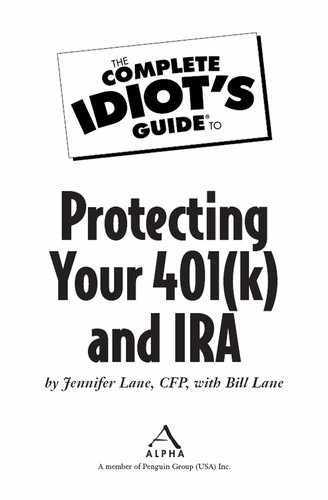Managing Your Retirement Accounts Through Divorce
Divorce is expensive—not only emotionally but also financially. There are a lot of decisions to make and negotiations to complete. When it comes to protecting your retirement security, pay attention to three important things: dividing assets with retirement tax planning in mind, calculating the value of your pension plans, and using QUADRO transfers to defer taxes.

Rainy Days
Try to be logical about the way you divide assets in divorce. One of the biggest mistakes is overstretching your budget to stay in the family home. If it took two paychecks to pay the mortgage and maintain the house before the divorce, it will be difficult to keep things going and still save for retirement on one paycheck afterward.
Keep Your Tax Planning Options Open
The emotional stress of divorce can complicate negotiations around dividing assets. It’s important to try to come away from the process with a balance of liquid assets, such as savings and investment accounts that are not in retirement plans—taxable accounts—and assets in retirement plans. Remember that having both to draw from in retirement will help with tax planning. The taxable accounts will give you access to lump sums of money so you can do things, like buy a car or make home repairs, without having to borrow money or make large taxable withdrawals from your retirement accounts. Try to work out the divorce settlement so you end up with your three money baskets: savings, taxable investments, and retirement accounts.
The best way to end up with a tax-smart balance is to list all the assets you are going to divide into three categories: savings and taxable investments, retirement accounts, and liquid assets such as houses or pensions. Then approximate the value of each, after-tax. When you negotiate, use the after-tax values as a guide to separating the assets fairly.
To estimate the after-tax value of each asset, calculate what you would be left with if you sold the asset and paid the taxes due.
• There’s no tax on liquidating a savings account, so the after-tax value of that account will be the same as the current balance.
• Unless you have a lot of appreciated investments in your investment account that would incur capital gains taxes, the after-tax value of your taxable account would be the same as the current value.
• Figure the after-tax value of your retirement accounts by multiplying the total value by your marginal tax bracket and then subtracting that tax obligation from the balance of the account. For example, if your retirement accounts total $100,000 and your marginal tax bracket is 25 percent, the tax due if you withdrew all the money would be $25,000. Subtracting the tax from the balance of the account yields an after-tax value of $75,000.
• Initially, you can use an online resource like www.Zillow.com to give you an estimate of what your home is worth. For a more accurate number, you should have a formal appraisal prepared. The after-tax value of the home is the estimated value, less a realtor’s fees, the cost of any major maintenance that would need to be done in order to sell it, and any capital gains taxes that would be due. If you’re married or selling the home because of a divorce, you don’t have to pay tax on up to $500,000 in capital gain. If you’re lucky enough to have a home that has appreciated by more than $500,000 since you bought it, subtract the capital gains tax amount, 15 percent of the appreciation over $500,000, to arrive at the after-tax value.
Real Value of a Pension
Pensions are a little tougher to value than other assets with a fixed value because they offer an income for life. Be careful to figure a fair current value of a pension when you’re looking at your assets.
Valuing the pension requires two steps. The first is to calculate the lump sum value at retirement age of all the income payments the pension is expected to make. The second is to calculate today’s value of that future lump sum.
“Present value of an annuity” is the name given to the figure you’re calculating in the first step. In this case, the word annuity means the stream of income payments and shouldn’t be confused with the name of a product you can buy from an insurance company. The present value of an annuity figure is the nest egg you’d need to provide the same payments the pension promises. It’s how much money you’d need invested in an account in order to receive regular payments equal to those the pension is going to pay.
For example, you have a pension that will pay $2,000 per month. The present value of that pension could be calculated as $420,000. This means that without the pension, you’d need $420,000 invested in an account in order to afford taking withdrawals of $2,000 per month.
A quick online search for “present value of annuity calculators” reveals a few easy-to-use calculators at websites like www.Money-Zine.com and www.Investopedia.com. The calculator will ask you for three numbers: the interest rate earned on the money per time period, the number of periods, and the payment amount. Make sure you keep your time periods consistent. If you’re using the monthly payment, be sure to use the number of months and the interest rate earned per month. For example, to get the monthly interest rate, you need to divide the annual interest rate by 12.
To make the calculation, enter the earned interest rate that you would expect to make on your investment—say 4 or 5 percent—the number of time periods or the number of years you expect to live in retirement and receive the pension—30 years, for example—and the pension amount. The result of the calculation will be the value of the pension at retirement age.
Next, figure out how much you would need to have now in an investment in order to arrive at retirement with a nest egg the size of the pension present value. The calculator for this is called the present value. This calculation is easier if you do it in years, using annual interest rate as the rate per time period and number of years until retirement as the number of periods. If a pension’s value at retirement is $420,000 and you have 20 years until you retire, using 4 percent as the interest rate means that the present value of the pension is $192,000.
Calculating the value of the pension this way will give you an idea of what this valuable asset is worth. Try the calculators a few times with different interest rates to see how using a rate a little higher or lower changes the numbers. Increasing the interest rate in either step reduces the value of the pension lump sum because higher interest means the same monthly payment can be received from a smaller lump sum of money. This calculation—and the interest rate used—could become a matter of negotiation. It’s a good idea to ask your attorney or financial planner for help analyzing the pension value if you’re not sure about your numbers.
QUADRO Is Your Friend
Fortunately, you won’t need to take a distribution and pay income taxes on the amount you have to take out of your retirement account as part of the divorce. Using a transfer called a qualified domestic relations order (QUADRO), you can transfer all or part of your account to your ex-spouse’s account without penalty or a tax liability.
QUADROs are a lot like retirement plan rollovers or direct transfers, except the transfer is between two different people’s accounts. They require a court order, so they are a little more complex than regular transfers and often take longer for the plan trustees to complete. Some plans will also charge a fee for a QUADRO.

Rainy Days
Some government plans and plans not covered by ERISA rules may not allow QUADRO transfers. This is unusual, but double-check with your plan administrator before promising a QUADRO transfer in a divorce negotiation.
To minimize fees and to keep things as simple as possible, try to divide the assets with as few QUADRO transfers as possible. Instead of splitting all the retirement accounts 50- 50, check back to the list you made of all the assets in after-tax value and plan a division that gives each party his share of the total assets while carefully keeping a balance of taxable and retirement accounts.
The Least You Need to Know
• An emergency fund equal to three to six months’ living expenses is an important part of protecting your retirement from unexpected expenses.
• You don’t have to leave your retirement account in a previous employer’s plan; you can transfer to a new plan or your own IRA without paying taxes.
• The real value of a pension income in retirement is often more than you would expect and worth researching if you’re divorcing a spouse who has a pension.
• A QUADRO transfer will let you move money between two divorcing spouses’ retirement accounts without taxes being due.
..................Content has been hidden....................
You can't read the all page of ebook, please click here login for view all page.
